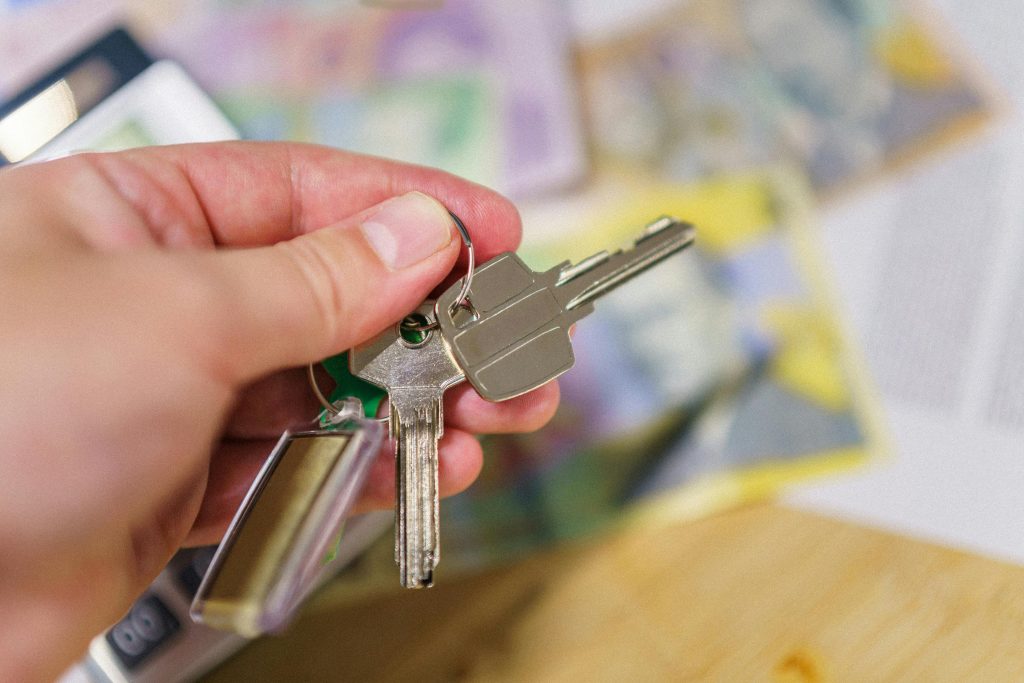Introduction
Valuing rental properties is one of the most important skills for real estate investors, landlords, and even tenants looking to understand market dynamics. Whether you’re buying your first duplex, managing a portfolio of apartment buildings, or evaluating a potential sale, knowing a property’s true worth helps you make profitable, data-driven decisions. Proper valuation can influence financing terms, tax liabilities, and long-term investment returns. In this guide, we’ll explore the most reliable methods for valuing rental properties, the factors that influence value, and best practices for managing risk.
Why Accurate Valuation Matters
Informed Investment Decisions
An overpriced property can erode cash flow and long-term returns, while undervaluing an asset could cause you to miss profitable opportunities.
Financing and Tax Implications
Banks and lenders base mortgage amounts and interest rates on property values. Tax assessments also rely on accurate valuations, impacting operating costs.
Portfolio Management
For landlords with multiple properties, precise valuations help prioritize renovations, refinancing, or sales.

Core Methods for Valuing Rental Properties
1. Comparable Sales (Market Approach)
This method compares the subject property to similar properties (comps) that have recently sold in the same area.
Steps:
- Identify 3–5 comparable properties with similar square footage, amenities, and location.
- Adjust for differences (e.g., add value for an extra bathroom or subtract for outdated interiors).
- Calculate the average price per square foot or unit.
Example:
A 4-unit building is compared to three similar sales:
- Comp A: Sold for $800,000 ($200,000/unit).
- Comp B: Sold for $780,000 ($195,000/unit).
- Comp C: Sold for $820,000 ($205,000/unit).
Average value per unit = ($200k + $195k + $205k)/3 = $200k.
Estimated value = $200k × 4 units = $800,000.
2. Income Capitalization Method (Cap Rate Approach)
This method values a property based on the income it generates.
Formula
Property Value=Net Operating Income (NOI)Capitalization Rate (Cap Rate)\text{Property Value} = \frac{\text{Net Operating Income (NOI)}}{\text{Capitalization Rate (Cap Rate)}}Property Value=Capitalization Rate (Cap Rate)Net Operating Income (NOI)
Steps
- Calculate NOI:
- Gross Rental Income – Operating Expenses = NOI.
- Determine Cap Rate:
- Use local market data or comparable property sales.
- Apply Formula:
- Divide NOI by cap rate.
Example:
- Annual gross rent: $120,000.
- Operating expenses: $30,000.
- NOI: $90,000.
- Cap rate in area: 6%.
- Value = $90,000 ÷ 0.06 = $1,500,000.
3. Gross Rent Multiplier (GRM)
GRM is a simpler alternative to the cap rate method and doesn’t factor in expenses.
Formula
Property Value=Gross Rental Income×GRM\text{Property Value} = \text{Gross Rental Income} \times \text{GRM}Property Value=Gross Rental Income×GRM
Steps
- Find local GRM averages by dividing property prices by gross rents for comparable sales.
- Multiply the subject property’s gross income by the GRM.
Example:
- Monthly rent: $10,000 ($120,000/year).
- Average GRM: 12.
- Value = $120,000 × 12 = $1,440,000.
4. Cost Approach
This method calculates what it would cost to rebuild the property today, minus depreciation, plus land value.
Formula
Value=Land Value+(Replacement Cost–Depreciation)\text{Value} = \text{Land Value} + (\text{Replacement Cost} – \text{Depreciation})Value=Land Value+(Replacement Cost–Depreciation)
Use Case: Best for new builds or unique properties with few comps.
Factors That Influence Rental Property Valuation
Location Quality
- Proximity to schools, transit, and job centers.
- Crime rates and neighborhood amenities.
Rental Demand
Markets with strong population growth or limited housing supply typically yield higher valuations.
Property Condition
Well-maintained properties with updated systems (plumbing, HVAC) are valued higher.
Lease Terms
Long-term leases with reliable tenants reduce risk and can raise value.
Economic Trends
Interest rates, employment data, and local economic growth all affect valuations.
Deep Dive: Calculating Net Operating Income (NOI)
Gross Income Components
- Rent from tenants.
- Additional revenue: parking fees, laundry, storage, or pet rent.
Operating Expenses Include
- Property taxes.
- Insurance.
- Maintenance and repairs.
- Property management fees.
- Utilities (if landlord-paid).
Note: Mortgage payments are excluded from NOI because they are part of financing, not property operations.
Understanding Cap Rates in Context
What Affects Cap Rates
- Market Risk: Riskier markets typically demand higher cap rates.
- Property Type: Class A properties (luxury) have lower cap rates than Class C (older, riskier).
- Economic Climate: Rising interest rates can push cap rates up, lowering property values.
Interpreting Cap Rates
A lower cap rate suggests a premium property with stable income but lower returns. A higher cap rate indicates higher potential returns but more risk.
Using Technology and Data Tools
Real Estate Platforms
Websites like Zillow, CoStar, and Redfin provide recent sales data and rental estimates.
Financial Modeling Software
Tools like ARGUS or Stessa can automate NOI calculations, cap rates, and cash flow projections.
Predictive Analytics
AI-based platforms can forecast rental demand trends, helping investors identify undervalued markets.
Common Mistakes When Valuing Rental Properties
- Ignoring Expenses: Overestimating NOI by excluding maintenance or vacancy rates.
- Overreliance on GRM: GRM doesn’t account for expenses, so use it only as a preliminary metric.
- Using Outdated Comparables: Real estate markets shift quickly—always use the latest data.
- Underestimating Future Risks: Consider upcoming zoning changes, tax hikes, or neighborhood trends.

Advanced Valuation Strategies
1. Discounted Cash Flow (DCF) Analysis
DCF analysis evaluates a property’s future cash flows, discounting them to present value using a required rate of return. It’s especially useful for long-term investors who want to account for future rent growth and expenses.
Steps for DCF
- Forecast Cash Flows: Estimate rental income, expenses, and vacancy rates over 5–10 years.
- Select a Discount Rate: Reflect the risk profile and opportunity cost.
- Calculate Terminal Value: Estimate the property’s value at the end of the forecast period, often using a cap rate.
- Discount to Present Value: Use a discounted cash flow calculator or spreadsheet.
Example:
- Projected annual NOI for 5 years: $90,000 growing at 2% annually.
- Discount rate: 8%.
- Terminal value at end of year 5: $1,600,000.
- Discounting these values provides a present value of approximately $1,420,000.
2. Sensitivity Analysis
Sensitivity testing helps evaluate how changes in key variables—like rent growth, cap rates, or expenses—affect property value.
Use Case
An investor can model scenarios such as:
- A 1% increase in cap rate reducing value by 10%.
- A 5% rent hike improving cash-on-cash return by 2 points.
This approach reveals risk exposure and prepares investors for market shifts.
3. Replacement Cost Benchmarking
For newer properties or unique builds, benchmark valuation against replacement cost. This sets a ceiling value—no rational buyer would pay more than the cost of building a similar property plus land.
4. Hybrid Approaches
Sophisticated investors blend methods:
- Cap Rate + DCF: Provides a near-term market value and a long-term projection.
- Market Comps + Income: Confirms that income-derived valuations align with recent sales.
Case Study: Applying Multiple Valuation Methods
Scenario: A 10-unit apartment building in a growing suburb.
| Metric | Value/Rate | Notes |
|---|---|---|
| Annual Rent Income | $180,000 | $1,500/month per unit |
| Operating Expenses | $50,000 | Includes taxes, insurance, etc. |
| NOI | $130,000 | |
| Local Cap Rate | 6.5% |
Cap Rate Approach: $130,000 ÷ 0.065 = $2,000,000.
Comparable Sales: Similar buildings sold for $195,000–$205,000/unit → $1,950,000–$2,050,000.
DCF Analysis: Forecasting NOI growth and discounting cash flows yields $1,980,000.
Conclusion: A fair market value estimate is around $2 million, consistent across methods.
Risk Factors to Consider
Market Volatility
Economic downturns or rising interest rates can quickly affect property values and investor demand.
Vacancy and Turnover Risk
High tenant turnover or prolonged vacancies reduce NOI, directly impacting valuations.
Maintenance Surprises
Unexpected capital expenditures—like roof replacements or HVAC failures—can lower returns and value.
Regulatory Changes
Rent control laws, zoning changes, or tax hikes can reshape market dynamics overnight.
Technology’s Role in Modern Valuation
AI-Powered Valuation Models
Platforms now use machine learning to analyze historical rent data, demographic trends, and market performance. These models often outperform manual estimates in rapidly changing markets.
Geographic Information Systems (GIS)
GIS tools visualize location-based data—crime rates, school districts, and transit accessibility—to refine valuation accuracy.
Blockchain for Property Data
Blockchain-based registries ensure transparency in property records and transaction histories, reducing the risk of fraud or outdated comps.
Tips for Investors and Landlords
- Use Multiple Methods: Relying on just GRM or comps can be misleading—always cross-check with income approaches.
- Stay Current on Market Trends: Follow local and national real estate news to adjust expectations.
- Inspect Properties Thoroughly: Physical condition impacts both value and future expenses.
- Factor in Tax Implications: Understand depreciation schedules and capital gains taxes when projecting returns.
- Consult Professionals: Appraisers, brokers, or financial advisors can validate your analysis.

Global Perspectives on Rental Valuation
United States
Highly data-driven markets with accessible MLS data make comps and cap rates widely used.
Europe
Stringent regulations in cities like Berlin or Paris require additional considerations such as rent caps or tenant protections.
Asia-Pacific
Markets like Singapore and Tokyo often see foreign investment, with GRM and DCF methods preferred due to dynamic rental demand.
Emerging Markets
Limited sales data may necessitate hybrid approaches combining cost estimates with income analysis.
Future Trends in Rental Property Valuation
Integration with Smart Home Data
IoT devices may provide real-time performance data—like energy efficiency or maintenance needs—that factor into valuations.
ESG (Environmental, Social, Governance) Impact
Sustainable buildings with green certifications increasingly command premium rents and valuations.
Crowdsourced Market Intelligence
Platforms pooling rental data from thousands of small investors will enhance valuation accuracy across regions.
Common Pitfalls to Avoid
- Overestimating Rent Growth: Conservative estimates protect against optimistic forecasting.
- Ignoring Local Economics: A strong national market doesn’t guarantee local success.
- Skipping Professional Appraisals: DIY valuations can miss subtle but important details.
- Not Accounting for Vacancy Rates: Even in hot markets, assume some downtime between tenants.
Actionable Takeaways
- Blend Methods for Accuracy: Combine cap rate, GRM, and DCF for a well-rounded view.
- Monitor Cap Rates and Interest Rates: Both directly impact property values.
- Leverage Technology: Use AI-driven tools and GIS mapping for competitive insights.
- Review Annually: Property values shift—update valuations regularly to guide decisions.
- Think Long-Term: Consider appreciation potential, not just current cash flow.
Conclusion
Valuing rental properties is both an art and a science. It requires balancing data-driven calculations with an understanding of market dynamics, property conditions, and long-term trends. By using multiple valuation methods—comparable sales, cap rates, GRM, cost approach, and DCF—you gain a clearer, more reliable estimate of a property’s worth. Modern technology, from AI analytics to GIS tools, further enhances accuracy. Investors and landlords who master these approaches can make smarter purchases, secure better financing, and optimize their portfolios for sustained profitability.

FAQs
1. What is the most accurate method to value a rental property?
There’s no single “best” method. Combining cap rate analysis, comparable sales, and discounted cash flow gives the most reliable results.
2. How often should rental properties be re-valued?
At least annually or when significant market or property changes occur, such as renovations, refinancing, or local economic shifts.
3. What role does NOI play in valuation?
Net Operating Income is central to cap rate and DCF methods—it represents the property’s income potential after expenses.
4. Should I include vacancy rates in my valuation?
Yes. Always account for realistic vacancy and turnover rates when forecasting cash flows.
5. Is GRM a reliable standalone method?
No. GRM is a quick screening tool but doesn’t factor in operating expenses or financing, so it should be supplemented with other approaches.
6. Can technology replace professional appraisals?
Technology can improve accuracy but doesn’t replace the nuanced insights of an experienced appraiser, especially for unique properties.

